Yejin Kim
FinAI Data Assistant: LLM-based Financial Database Query Processing with the OpenAI Function Calling API
Oct 15, 2025



Abstract:We present FinAI Data Assistant, a practical approach for natural-language querying over financial databases that combines large language models (LLMs) with the OpenAI Function Calling API. Rather than synthesizing complete SQL via text-to-SQL, our system routes user requests to a small library of vetted, parameterized queries, trading generative flexibility for reliability, low latency, and cost efficiency. We empirically study three questions: (RQ1) whether LLMs alone can reliably recall or extrapolate time-dependent financial data without external retrieval; (RQ2) how well LLMs map company names to stock ticker symbols; and (RQ3) whether function calling outperforms text-to-SQL for end-to-end database query processing. Across controlled experiments on prices and fundamentals, LLM-only predictions exhibit non-negligible error and show look-ahead bias primarily for stock prices relative to model knowledge cutoffs. Ticker-mapping accuracy is near-perfect for NASDAQ-100 constituents and high for S\&P~500 firms. Finally, FinAI Data Assistant achieves lower latency and cost and higher reliability than a text-to-SQL baseline on our task suite. We discuss design trade-offs, limitations, and avenues for deployment.
GuruAgents: Emulating Wise Investors with Prompt-Guided LLM Agents
Oct 02, 2025Abstract:This study demonstrates that GuruAgents, prompt-guided AI agents, can systematically operationalize the strategies of legendary investment gurus. We develop five distinct GuruAgents, each designed to emulate an iconic investor, by encoding their distinct philosophies into LLM prompts that integrate financial tools and a deterministic reasoning pipeline. In a backtest on NASDAQ-100 constituents from Q4 2023 to Q2 2025, the GuruAgents exhibit unique behaviors driven by their prompted personas. The Buffett GuruAgent achieves the highest performance, delivering a 42.2\% CAGR that significantly outperforms benchmarks, while other agents show varied results. These findings confirm that prompt engineering can successfully translate the qualitative philosophies of investment gurus into reproducible, quantitative strategies, highlighting a novel direction for automated systematic investing. The source code and data are available at https://github.com/yejining99/GuruAgents.
* 7 Pages, 2 figures
Understanding the behavior of representation forgetting in continual learning
May 28, 2025Abstract:In continual learning scenarios, catastrophic forgetting of previously learned tasks is a critical issue, making it essential to effectively measure such forgetting. Recently, there has been growing interest in focusing on representation forgetting, the forgetting measured at the hidden layer. In this paper, we provide the first theoretical analysis of representation forgetting and use this analysis to better understand the behavior of continual learning. First, we introduce a new metric called representation discrepancy, which measures the difference between representation spaces constructed by two snapshots of a model trained through continual learning. We demonstrate that our proposed metric serves as an effective surrogate for the representation forgetting while remaining analytically tractable. Second, through mathematical analysis of our metric, we derive several key findings about the dynamics of representation forgetting: the forgetting occurs more rapidly to a higher degree as the layer index increases, while increasing the width of the network slows down the forgetting process. Third, we support our theoretical findings through experiments on real image datasets, including Split-CIFAR100 and ImageNet1K.
Predicting Movie Hits Before They Happen with LLMs
May 05, 2025Abstract:Addressing the cold-start issue in content recommendation remains a critical ongoing challenge. In this work, we focus on tackling the cold-start problem for movies on a large entertainment platform. Our primary goal is to forecast the popularity of cold-start movies using Large Language Models (LLMs) leveraging movie metadata. This method could be integrated into retrieval systems within the personalization pipeline or could be adopted as a tool for editorial teams to ensure fair promotion of potentially overlooked movies that may be missed by traditional or algorithmic solutions. Our study validates the effectiveness of this approach compared to established baselines and those we developed.
Integrating LLM-Generated Views into Mean-Variance Optimization Using the Black-Litterman Model
Apr 19, 2025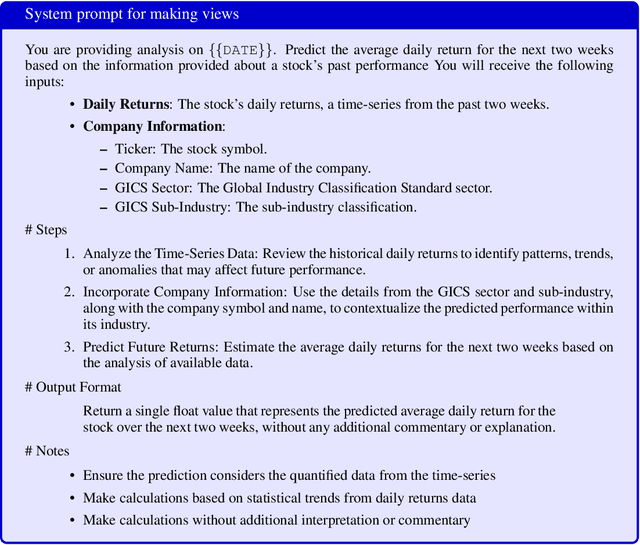



Abstract:Portfolio optimization faces challenges due to the sensitivity in traditional mean-variance models. The Black-Litterman model mitigates this by integrating investor views, but defining these views remains difficult. This study explores the integration of large language models (LLMs) generated views into portfolio optimization using the Black-Litterman framework. Our method leverages LLMs to estimate expected stock returns from historical prices and company metadata, incorporating uncertainty through the variance in predictions. We conduct a backtest of the LLM-optimized portfolios from June 2024 to February 2025, rebalancing biweekly using the previous two weeks of price data. As baselines, we compare against the S&P 500, an equal-weighted portfolio, and a traditional mean-variance optimized portfolio constructed using the same set of stocks. Empirical results suggest that different LLMs exhibit varying levels of predictive optimism and confidence stability, which impact portfolio performance. The source code and data are available at https://github.com/youngandbin/LLM-MVO-BLM.
KEDRec-LM: A Knowledge-distilled Explainable Drug Recommendation Large Language Model
Feb 27, 2025Abstract:Drug discovery is a critical task in biomedical natural language processing (NLP), yet explainable drug discovery remains underexplored. Meanwhile, large language models (LLMs) have shown remarkable abilities in natural language understanding and generation. Leveraging LLMs for explainable drug discovery has the potential to improve downstream tasks and real-world applications. In this study, we utilize open-source drug knowledge graphs, clinical trial data, and PubMed publications to construct a comprehensive dataset for the explainable drug discovery task, named \textbf{expRxRec}. Furthermore, we introduce \textbf{KEDRec-LM}, an instruction-tuned LLM which distills knowledge from rich medical knowledge corpus for drug recommendation and rationale generation. To encourage further research in this area, we will publicly release\footnote{A copy is attached with this submission} both the dataset and KEDRec-LM.
Linq-Embed-Mistral Technical Report
Dec 04, 2024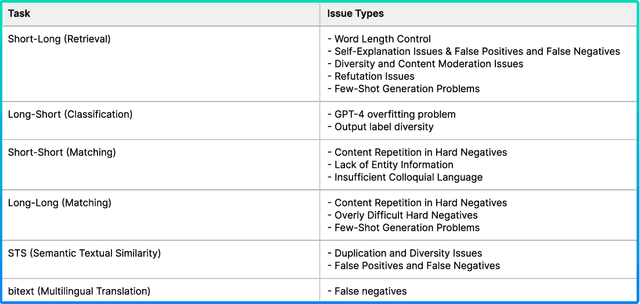
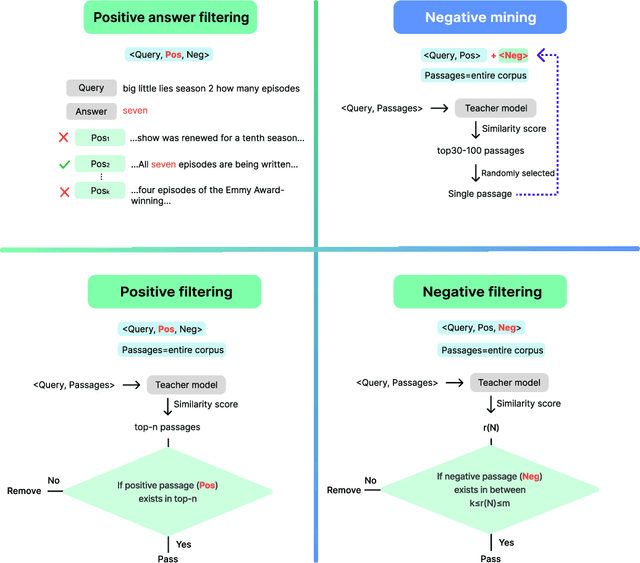
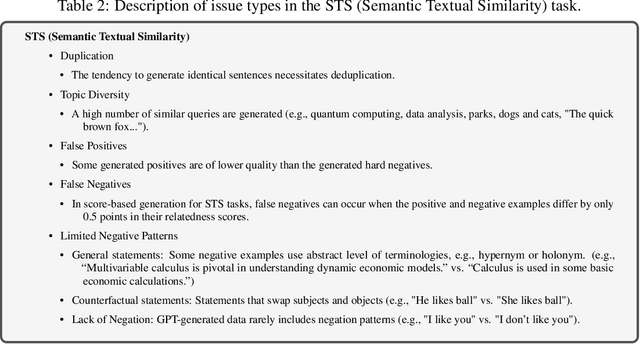
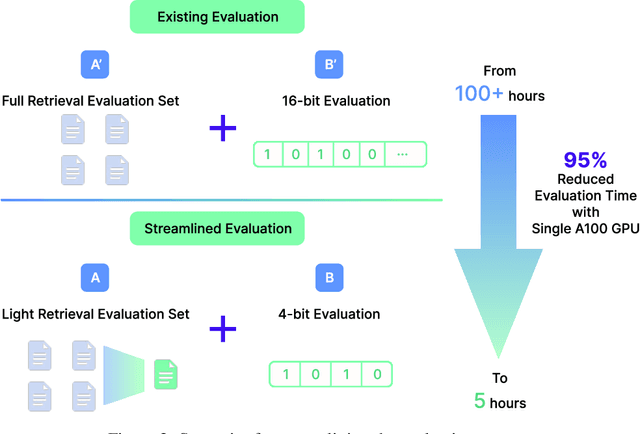
Abstract:This report explores the enhancement of text retrieval performance using advanced data refinement techniques. We develop Linq-Embed-Mistral\footnote{\url{https://huggingface.co/Linq-AI-Research/Linq-Embed-Mistral}} by building on the E5-mistral and Mistral-7B-v0.1 models, focusing on sophisticated data crafting, data filtering, and negative mining methods, which are highly tailored to each task, applied to both existing benchmark dataset and highly tailored synthetic dataset generated via large language models (LLMs). Linq-Embed-Mistral excels in the MTEB benchmarks (as of May 29, 2024), achieving an average score of 68.2 across 56 datasets, and ranks 1st among all models for retrieval tasks on the MTEB leaderboard with a performance score of 60.2. This performance underscores its superior capability in enhancing search precision and reliability. Our contributions include advanced data refinement methods that significantly improve model performance on benchmark and synthetic datasets, techniques for homogeneous task ordering and mixed task fine-tuning to enhance model generalization and stability, and a streamlined evaluation process using 4-bit precision and a light retrieval evaluation set, which accelerates validation without sacrificing accuracy.
Causal Reasoning in Large Language Models: A Knowledge Graph Approach
Oct 15, 2024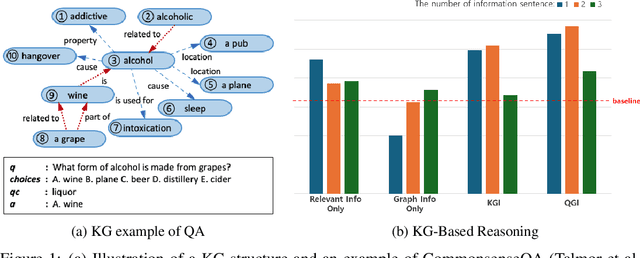
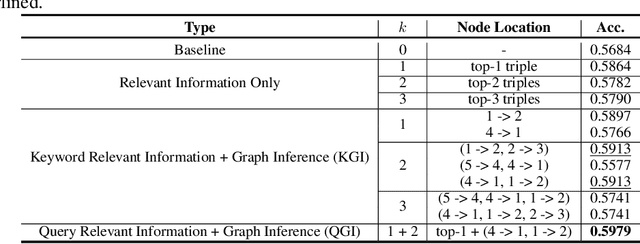
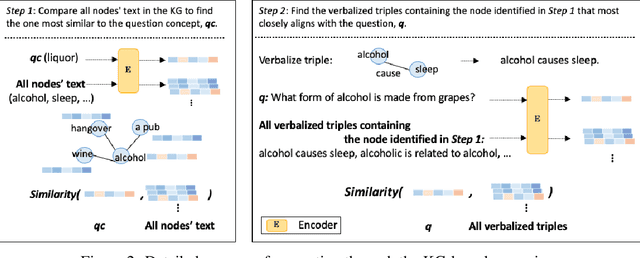
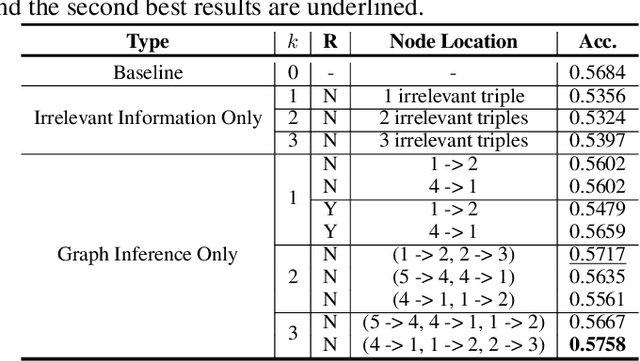
Abstract:Large language models (LLMs) typically improve performance by either retrieving semantically similar information, or enhancing reasoning abilities through structured prompts like chain-of-thought. While both strategies are considered crucial, it remains unclear which has a greater impact on model performance or whether a combination of both is necessary. This paper answers this question by proposing a knowledge graph (KG)-based random-walk reasoning approach that leverages causal relationships. We conduct experiments on the commonsense question answering task that is based on a KG. The KG inherently provides both relevant information, such as related entity keywords, and a reasoning structure through the connections between nodes. Experimental results show that the proposed KG-based random-walk reasoning method improves the reasoning ability and performance of LLMs. Interestingly, incorporating three seemingly irrelevant sentences into the query using KG-based random-walk reasoning enhances LLM performance, contrary to conventional wisdom. These findings suggest that integrating causal structures into prompts can significantly improve reasoning capabilities, providing new insights into the role of causality in optimizing LLM performance.
Achieving Fairness Across Local and Global Models in Federated Learning
Jun 24, 2024Abstract:Achieving fairness across diverse clients in Federated Learning (FL) remains a significant challenge due to the heterogeneity of the data and the inaccessibility of sensitive attributes from clients' private datasets. This study addresses this issue by introducing \texttt{EquiFL}, a novel approach designed to enhance both local and global fairness in federated learning environments. \texttt{EquiFL} incorporates a fairness term into the local optimization objective, effectively balancing local performance and fairness. The proposed coordination mechanism also prevents bias from propagating across clients during the collaboration phase. Through extensive experiments across multiple benchmarks, we demonstrate that \texttt{EquiFL} not only strikes a better balance between accuracy and fairness locally at each client but also achieves global fairness. The results also indicate that \texttt{EquiFL} ensures uniform performance distribution among clients, thus contributing to performance fairness. Furthermore, we showcase the benefits of \texttt{EquiFL} in a real-world distributed dataset from a healthcare application, specifically in predicting the effects of treatments on patients across various hospital locations.
MALLM-GAN: Multi-Agent Large Language Model as Generative Adversarial Network for Synthesizing Tabular Data
Jun 15, 2024
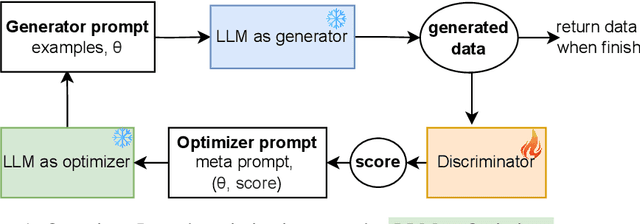


Abstract:In the era of big data, access to abundant data is crucial for driving research forward. However, such data is often inaccessible due to privacy concerns or high costs, particularly in healthcare domain. Generating synthetic (tabular) data can address this, but existing models typically require substantial amounts of data to train effectively, contradicting our objective to solve data scarcity. To address this challenge, we propose a novel framework to generate synthetic tabular data, powered by large language models (LLMs) that emulates the architecture of a Generative Adversarial Network (GAN). By incorporating data generation process as contextual information and utilizing LLM as the optimizer, our approach significantly enhance the quality of synthetic data generation in common scenarios with small sample sizes. Our experimental results on public and private datasets demonstrate that our model outperforms several state-of-art models regarding generating higher quality synthetic data for downstream tasks while keeping privacy of the real data.
 Add to Chrome
Add to Chrome Add to Firefox
Add to Firefox Add to Edge
Add to Edge